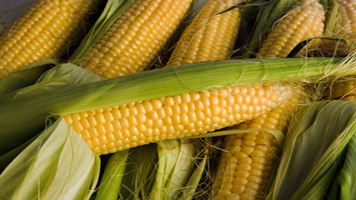Wet Weather Could Mean Your Corn Needs Nitrogen
Category: Commentary, Grains, Miscellaneous
 (AGWeb) – For the past two weeks large chunks of the Corn Belt have been receiving rain. Farmers should pay attention to when and how the rain comes so they have a better idea if their corn will be subject to nitrogen losses, according to Farm Journal Associate Field Agronomist Missy Bauer.
(AGWeb) – For the past two weeks large chunks of the Corn Belt have been receiving rain. Farmers should pay attention to when and how the rain comes so they have a better idea if their corn will be subject to nitrogen losses, according to Farm Journal Associate Field Agronomist Missy Bauer.
Farmers at the greatest risk are those who’ve had hard, fast rains accompanied by warm temperatures. Think through your management and recent weather to determine what actions you need to take.
“With the amount of rain in different areas we’ve been getting, I think we’re just starting to see the initial kind of effects [rain can have] on the nitrogen side for the corn,” she told AgriTalk host Chip Flory on Tuesday.
According to Bauer, the total amount of rain is one issue and how it’s coming is another. Both are leading to the potential for nitrogen losses when corn needs it most. Bauer says it’s one thing to get an inch of rain, it’s another to get an inch of rain in an hour.
“It’s, the intensity of the rain that I think really affects the leaching as well as the denitrification,” she explained. “You know, if we get three inches of rain over four days, that’s a lot different.”
What happens during a leaching event? Well, in sandier soils, the rain pushes nitrates down deeper into the soil profile, Bauer explained. At the stage the majority of corn is today, it just can’t reach that nitrogen. On the other hand, in heavy soils, fast, hard rains can lead to total nitrogen loss.
Mind not only rainfall, but the temperature as well to determine risk of nitrogen loss. According to Bauer, when it comes to denitrification the temperature that occurs when soils are saturated is a key factor.
“So, let’s say your soils are saturated for five days, which probably is not that uncommon for people this year, but temperatures are 55-60 degrees, we might only lose 10% of our nitrogen,” she explained. “But if we’re saturated for five days, and it’s 75 to 80 degree temperatures, now we can lose 75% of our nitrogen.”
She says that’s one of the biggest issues. On a whole, the big rains this year have been accompanied by warm weather.
Know your nitrogen management strategy and take that into account.
“Let’s say, 100% of his program was already on, either through pre-plant anhydrous or just UN broadcast before the corn came up, then we’re going to be pulling the nitrate samples pretty quick to try and get an idea of how much nitrate is left in the soil at this time, or ammonium nitrogen that soil has to convert,” Bauer says. “But, if all of our N was on and we had these big events, we pull samples and the soil comes back low, we know we need to do some rescue treatments.”
Once you know how much nitrogen is left in the soil you can decide your next steps. One thing is for certain, leaving your corn without access to nitrogen is not an option.
“Nitrogen is king,” Bauer said. “The last thing we can do with a corn crop is leave it hanging when it comes to nitrogen.”
While it may seem like a rescue application of nitrogen won’t be worth the cost, Bauer said it’s actually pretty cheap in the long run.
“You know, when you look at the cost of nitrogen compared to a bushel of corn, it’s still a very cheap input,” she said. “We [can] throw an extra maybe 30-40 units of nitrogen on, that doesn’t cost us a lot of money, but it can be huge bushels at the end of the year.”




